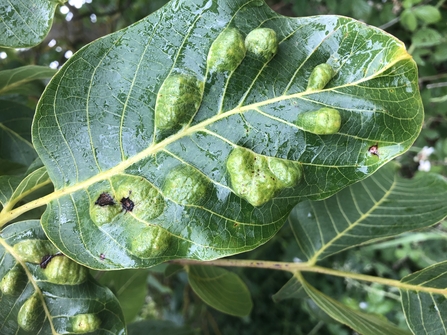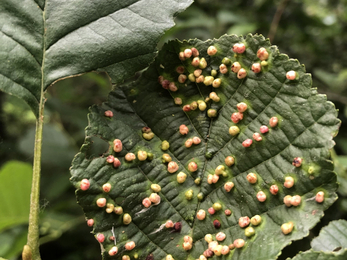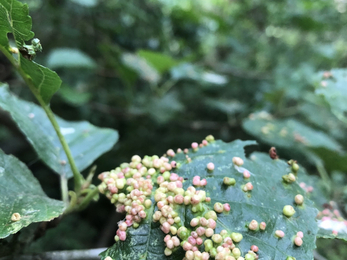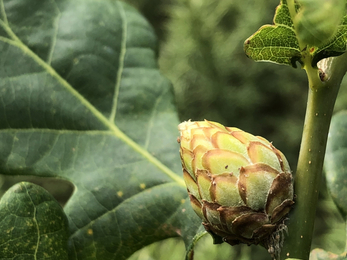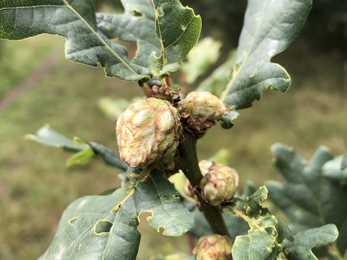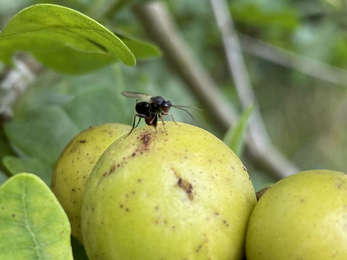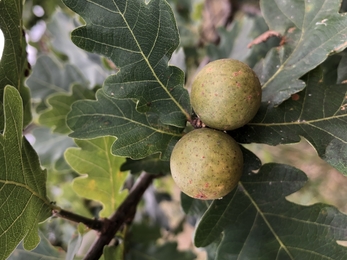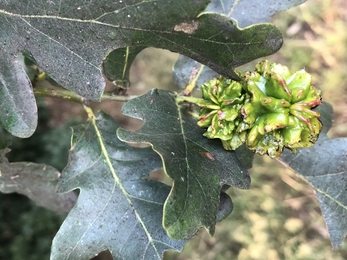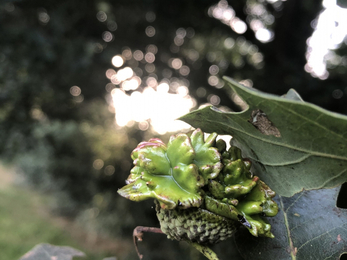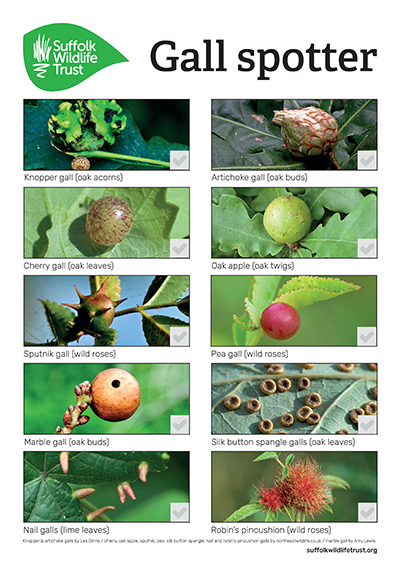Plant galls are abnormal growths that have formed as a reaction to species such as wasps, mites, or flies laying their eggs in different plant hosts and some are also caused by fungi and bacteria. Plant galls are some of the most fascinating natural structures with 2000 different galls present in the UK. Come the summer, it’s great fun going on a hunt to find them and it’s one of my favourite activities to do in the parks and green spaces in Ipswich. One of the best things about galls is that often the gall-inducing species has two generations emerging at two different times of year, producing two completely different types of gall types and shapes and further opportunities to see these wonderful natural structures.
In the summer, great galls to look out for are the blistered bumps that the walnut gall mite, Eriophyes erineus, produce, sometimes completely covering walnut tree leaves, making themselves at home as soon as a leaf unfurls. Great places to find these in Ipswich are in Chantry Park, the largest of all the town’s parks.

